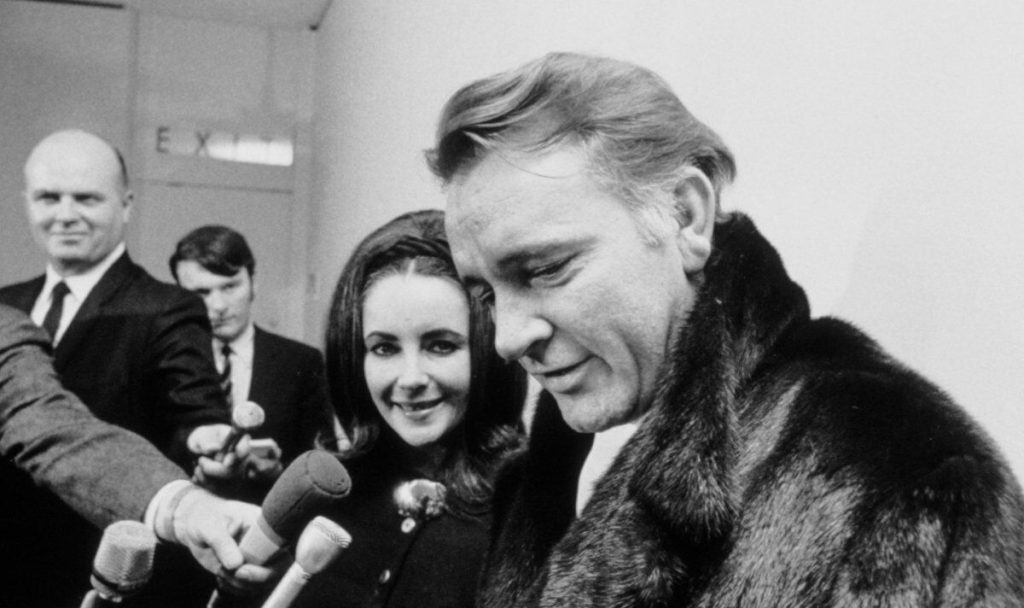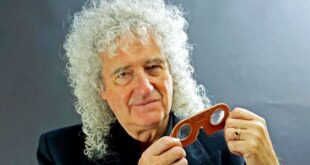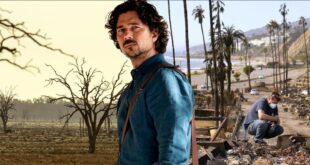
Their vanity, their hubris and their sheer bad taste were displayed for all to see as they travelled around the world by private jet, wrapped in furs and flashing their diamonds. “I have a lust for diamonds,” Taylor once admitted, “that’s almost a disease.”
I rediscovered their films – the overblown sparkling filigree of Boom!, The Comedians, The Sandpiper, Doctor Faustus and Hammersmith Is Out – while recovering from pancreatitis in a hospital’s high dependency unit 13 years ago.
They perfectly captured my mood at the time, feverish and off my head on painkillers, and they have now inspired my new biography of the pair, Erotic Vagrancy.
Burton first met Taylor professionally in Rome in late 1961, when the actress was busy bankrupting Twentieth Century Fox whilst making Cleopatra – the budget eventually reached £25.5million – a staggering 10 times that in today’s money.
There were endless delays because Taylor was ill – throat and bladder infections, back strain, twisted intestines and pneumonia. Production had already been halted and abandoned in London – the scrapped sets at Pinewood were recycled by Peter Rogers for Carry On Cleo.
Instead of simply playing Antony and Cleopatra, Burton and Taylor turned into the characters in real life, conducting an affair in front of the paparazzi’s cameras.
Burton was still married to his nice little Welsh wife Sybil. Taylor was still married to the devoted Eddie Fisher, whom she had poached from nice little Debbie Reynolds. This was public adultery on a grand scale.
The Pope was outraged. “You will finish in an erotic vagrancy, without end or without a safe port,” John XXIII thundered from the Vatican. “Can I sue the Pope?” Taylor was heard to ask.
Their love was never normal, never domesticated. It was obsessional, psychotic, disturbed, haunted.
Burton and Taylor went in for scenes. As Rex Harrison, cast as Julius Caesar, said of the Cleopatra shoot: “At the height of it, Elizabeth and Richard kept hitting each other and giving each other black eyes.”
Whenever Burton threatened to return to Sybil, Taylor swallowed an overdose. An ambulance was kept on standby at the studio, to rush her to hospital.
Fisher was led a merry dance. Meant to be responsible for getting Taylor to the make-up chair on time, Taylor decided she didn’t like being supervised – so the exasperated Eddie disappeared to New York and on March 30, 1962, held a press conference there.
Over the transatlantic phone, and witnessed by reporters, Eddie asked Taylor to confirm that tales of her involvement with Burton were “preposterous, ridiculous,
absolutely false”.
There was a long pause. “Eddie, I can’t do that, because there’s some truth in the story,” she admitted. Cleopatra remains a
monument to the self-indulgence of its stars and of the Hollywood system, as Taylor was well aware.
“What ballooned the unbelievably insane quality of everything was the insanity going on at the set every day,” she later recalled.
Fifteen hundred spears went missing. Lavish sequences were shot and discarded. Elephants from Chipperfield’s Circus were shipped to Rome and not needed.
A cat had kittens under the floorboards, so an Egyptian palace set was ripped up to free them. The cast was on overtime for months, distinguished actors and actresses, such as Michael Hordern or Francesca Annis, were left at a complete loose end.
So much wood, steel and paint were used to build and decorate the Forum, there were shortages in the Italian construction industry.
Nevertheless, Burton and Taylor survived the scandal. He went on to Broadway to play Hamlet – followed by Taylor, who made a nuisance of herself sitting in the stalls, attracting all the attention and drawing huge crowds every night at the stage door.
This episode is dramatised in the marvellous new Jack Thorne play The Motive And The Cue, directed by Sam Mendes, in which Johnny Flynn is a creditable Burton.
But who really can duplicate Burton’s voice? It was one of the 20th century’s great noises, roaring, swelling, deliberative and bombastic by turns. His articulation and diction were very precise.
Burton and Taylor were married in 1964, divorced in 1974, remarried in 1975, divorced again in 1976, and never seemed to leave each other alone.
“I love her mindlessly and hopelessly,” said Burton of Taylor. “If I’m away from Richard I feel like half a pair of scissors,” Taylor said by way of return.
They always remained each other’s idea of fun – and the 11 films they made together are very knockabout, the characters and couples they played pummelling each other and threatening to separate. Best known is Who’s Afraid of Virginia Woolf?, directed by Mike Nichols in 1966 based on Edward Albee’s play and a rare hit for the pair.
It’s about a long night of drinking and arguing, and Taylor won the Academy Award for her blowsy Martha. Burton, as the boozy, bookish George, could have been playing himself – for if his diaries are any indication, the actor was already lost in an alcoholic haze. “Sloshed all day,” is a frequent admission. “I am drinking too steadily – lunchtime and dinner time… Am still a bundle of nerves.”
The Taming of the Shrew, made in Italy in 1967, is a comic version of the Burton and Taylor Punch and Judy act, with more pummelling. Burton’s Petruchio and Taylor’s Kate throw furniture and fruit at each other, race over rooftops, swing from ropes, fall through trapdoors and off donkeys, collapse in rain puddles – it’s all very excessive.
Yet this was their appeal, at least to me. They were never ordinary. With multi-million-dollar fees coming their way – and Swiss residency meaning no income tax was paid – Burton and Taylor could enjoy private yachts and executive jets.
They could afford to have hamburgers flown to London or Rome or Mexico by specially-chartered Pan-Am jets from A-list restaurant Chasen’s in Los Angeles. Cheesecake was delivered from Lindy’s deli in New York.
When the stars stayed at The Dorchester hotel, there was a boat anchored on the Thames for their pets, which couldn’t come ashore because of quarantine restrictions.
And wherever they might be residing, the dogs were never housetrained. Burton and Taylor simply had the Wilton carpets replaced every three weeks.
This is how it went on for years on end – suites retained in grand hotels simply to store their clothes; chauffeured limousines on 24-hour call. Taylor, the former child star of Lassie and National Velvet, who had exchanged dogs and horses for husbands, was used to luxury and deference.
For Burton, however, who had originated in South Wales, and who grew up in the poverty of the mining community, there was always a streak of puritanical guilt.
Is this why he drank? “I loved my silly image of the besotted Welsh genius, dying in his own vomit in the gutter,” he once joked.
But it was scarcely a joke. Sciatica, gout, and assorted alcohol-related ailments did for him, and he was in his grave in 1984, at the age of 58. Burton really was a Faustian figure, who had sold his soul to the devil in return for worldly success and
material riches.
As for Taylor, she kept going until 2011, by then dependent on an emerald-encrusted wheelchair. “I get ill because I live too hard,” she explained of her continuing hospitalisations. “I give too much, out of a lust for life. I never back away.” She was 79 when she finally gave up the ghost.
From the Cleopatra days, it was often as if she was about to die, but never did. She had too much savagery and pride to cave in – as her later husbands, Senator John Warner and redneck drug addict Larry Fortensky, would concur.
She contributed to Aids charities, earned more money from endorsing brands of perfume than she ever did from acting, and had a peculiar friendship with singer Michael Jackson, which looks unsavoury now. She got fat.
“Her blood type is Ragu,” laughed Joan Rivers. “This woman could moon Europe.” Her story, and Burton’s, is one of disaster, drugs, violence and lechery.
To an ordinary person like me, this is riveting, if alien. Burton and Taylor were people needing to be transported by irresistible powers; everything had to have intensity, force, excitement, fervour. I hope in my new book some of this comes across.
It had better. The day after I finished it, I crashed to the ground again. This time with a heart attack, necessitating an air ambulance helicopter to hospital, the works. If I were to say Burton and Taylor nearly killed me, believe me I am not exaggerating.
- Erotic Vagrancy: Everything about Richard Burton and Elizabeth Taylor by Roger Lewis (Quercus, £30) is out now. For free UK P&P, visit expressbookshop.com or call Express Bookshop on 020 3176 3832

 Latest Breaking News Online News Portal
Latest Breaking News Online News Portal




